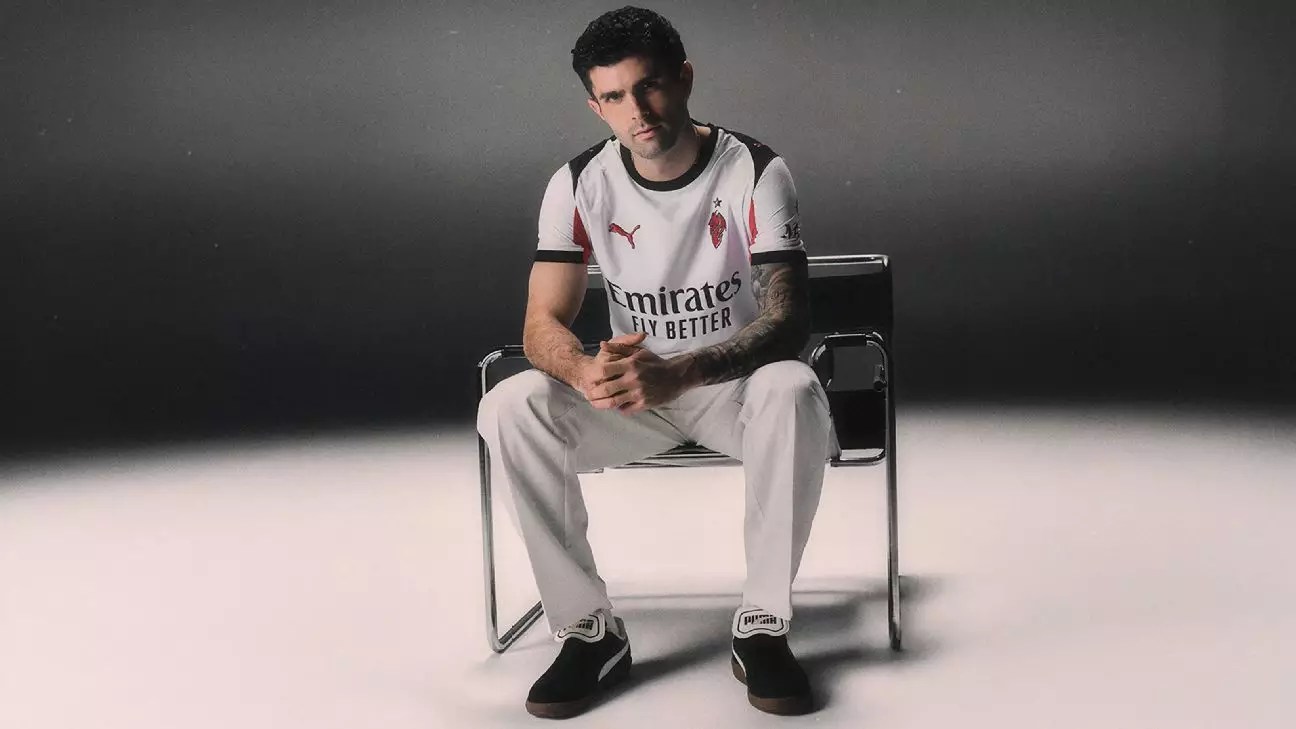When AC Milan introduces a new away kit, it is more than a simple change of apparel; it is a declaration of identity, history, and belonging. The latest design continues this tradition by embedding the club’s centuries-old roots into a contemporary aesthetic. The recurring motif of the “little devil” underscores the club’s fierce spirit and resilience—a symbol that has endured through triumphs and tribulations alike. This shirt isn’t just fabric; it’s a narrative woven with the threads of over 125 years of distinguished football heritage.
What strikes me most is how the design consciously pulls from fragments of the past—most notably, the revival of the iconic “Diavoletto” crest that made its last appearance in the early 1980s. This is a deliberate choice that signals respect for tradition, even as clubs worldwide increasingly chase modern aesthetics. It’s almost as if Milan is asserting that, despite evolving trends, their identity remains rooted in their history. The decision to reintroduce this nostalgic emblem, especially following a controversial chapter involving the club’s past scandals, paints a complex picture. It suggests that embracing history, even the difficult parts, constitutes part of their ongoing story.
Design Simplicity and Nostalgic Elegance—Or Lost Potential?
From a purely visual standpoint, the design embraces a minimalist philosophy. The shirt features a predominantly white canvas with strategic splashes of red and black—colors that have long been synonymous with the Rossoneri. However, this sparing use of color and the straightforward blocky pattern might be seen as a missed opportunity. A more intricate or innovative pattern could have elevated the jersey beyond mere homage into a true statement piece.
Furthermore, the aesthetic approach appears to lean heavily on nostalgia, almost to the point of feeling like a throwback rather than a fresh interpretation. It’s reminiscent of early 2000s training wear—functional, unpretentious, but perhaps lacking the sophistication expected from a club of Milan’s stature. While some fans may appreciate the retro vibe, others could see it as a step backward from the sleek, polo-collared marvel of last season’s away kit. The simplistic design risks sounding generic in a marketplace saturated with eye-catching and innovative sportswear.
Celebrity Endorsements and Cultural Significance
In the broader context, the deployment of high-profile figures like Christian Pulisic modeling the kit signals Milan’s strategic aim to appeal both on and off the pitch. Their choice of imagery—serious, almost contemplative—attempts to evoke a sense of gravitas and continuity. However, it also raises questions about whether such marketing tactics overshadow the core desire for authentic, inventive designs.
Beneath the surface, this kit feels like Milan hedging its bets—delivering a product that leans heavily on tradition while subtly hinting at modernization. Yet, the overall impression is of a cautious approach, one perhaps more concerned with nostalgia than pushing creative boundaries. For a club known for its elegance and innovative spirit, this design may fall short in inspiring the same passion that their on-field victories have ignited over the decades.
In essence, AC Milan’s latest away kit encapsulates their enduring struggle—balancing reverence for history with the need to stay relevant. While it pays tribute to the club’s legendary past, it might also reveal a hesitance to fully embrace bold, new visual languages. For die-hard fans and casual observers alike, it becomes a statement not just about jerseys, but about how Milan perceives itself amidst the ever-shifting landscape of modern football fashion.


Leave a Reply